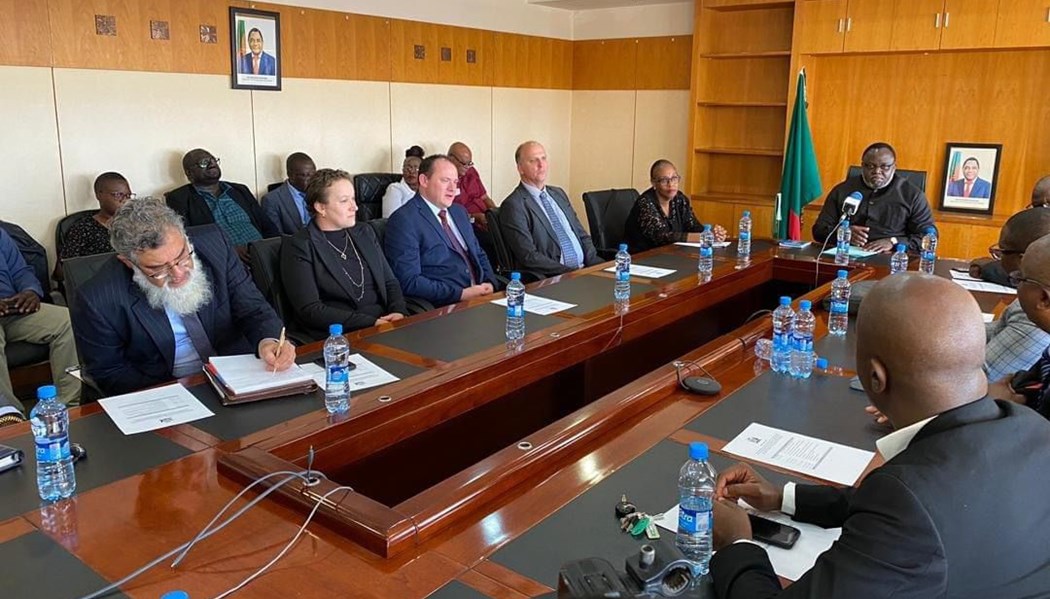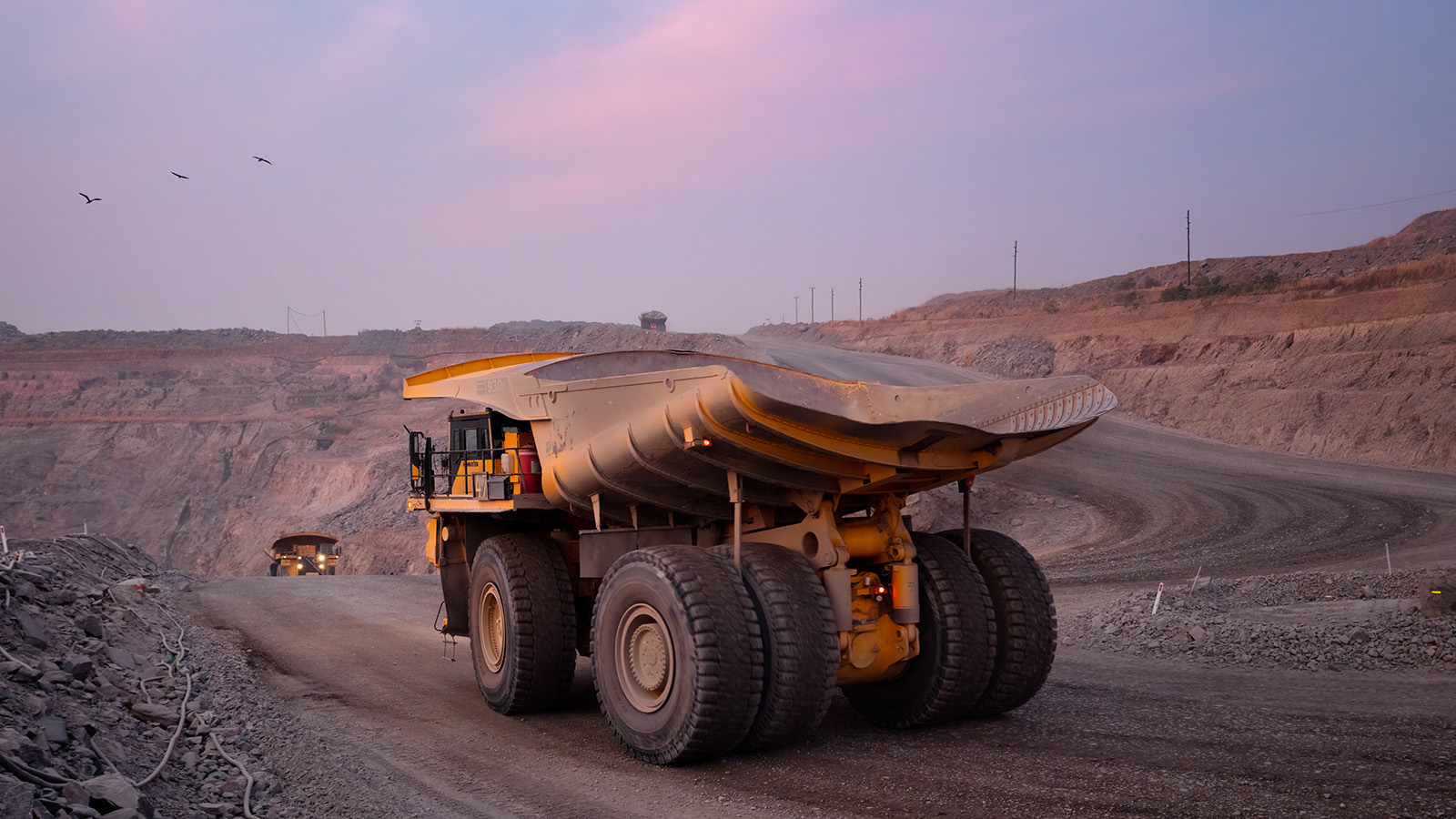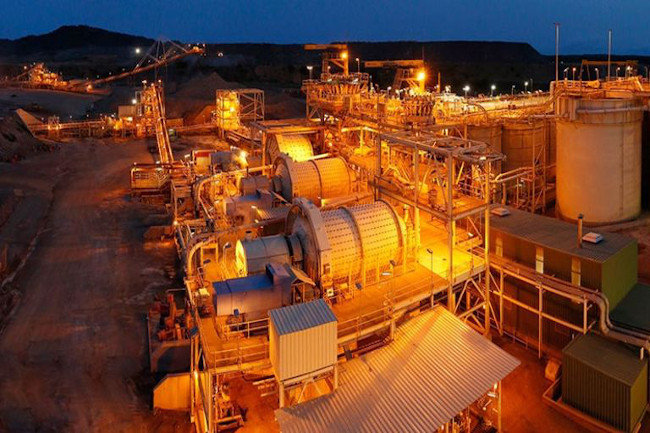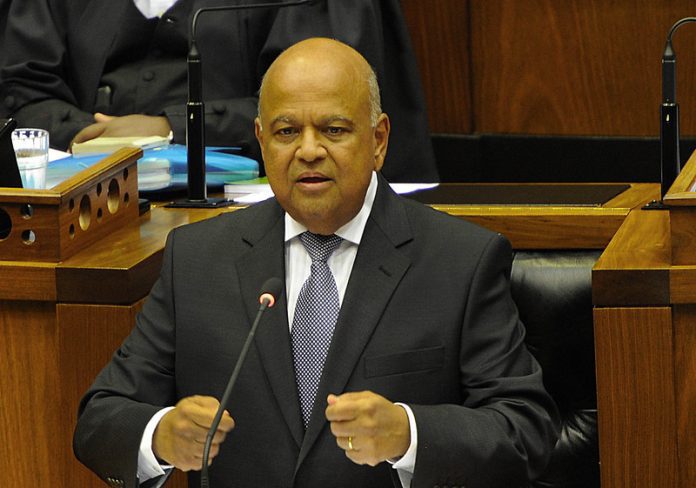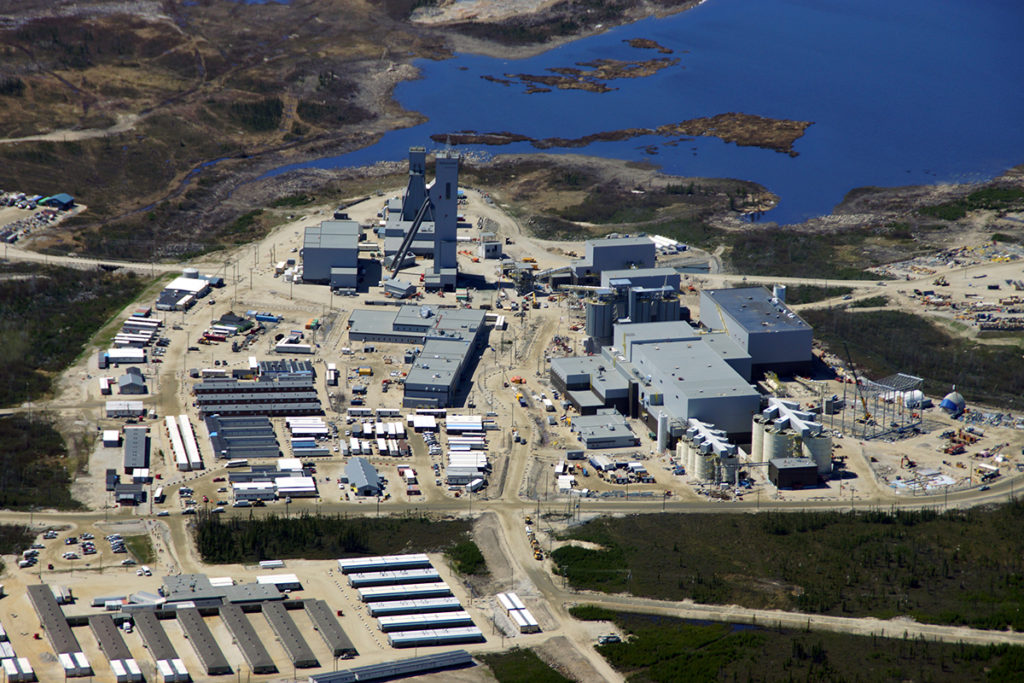Other

Navigating Geopolitical Risks in Mining Industry Challenges in 2025

How Are Geopolitical Tensions Reshaping the Mining Industry?
In 2025, the global mining landscape has transformed dramatically as major powers engage in what industry leaders describe as a "high-intensity confrontation phase" over critical minerals. This unprecedented level of geopolitical tension has created a volatile operating environment for mining companies worldwide, with significant implications for project development, revenue forecasts, and strategic planning.
The New Era of Resource Competition
The competition for critical minerals has intensified to extraordinary levels in 2025, creating what Zijin Mining Group—the world's third-largest metals miner by market value—has called "unprecedented global uncertainties." Despite these challenges, Zijin reported a remarkable 54% jump in first-half net income to 23.3 billion yuan (US$3.3 billion), demonstrating that some companies are successfully navigating the turbulent landscape.
Resource nationalism has emerged as a dominant political trend, with governments worldwide seeking greater control over their mineral wealth. This shift represents a fundamental challenge to the traditional operating models of multinational mining corporations, requiring adaptive strategies and fresh approaches to government relations.
The stakes have never been higher, as control over mineral resources has become synonymous with economic security and geopolitical influence in the emerging global order.
Critical Minerals at the Center of Global Power Struggles
Critical minerals—materials deemed vital to national security due to their essential roles in defense applications and industrial processes—have become the focal point of international tensions. The strategic importance of these resources extends beyond mere economic value, touching on fundamental questions of national sovereignty and security.
Key materials like copper, rare earth elements, lithium, and cobalt are now actively targeted by major powers seeking to establish supply chain dominance. What began as economic competition has evolved into full-scale geopolitical confrontation, with significant implications for mining companies operating across multiple jurisdictions.
The effects of this strategic competition are already being felt in corporate boardrooms, where mining executives must now factor geopolitical risks in mining into their operational and investment decisions to an unprecedented degree.
What Specific Geopolitical Challenges Do Mining Companies Face in 2025?
Mining companies must navigate an increasingly complex web of geopolitical challenges that directly impact their operations, profitability, and long-term strategic planning. These challenges range from regulatory barriers to supply chain disruptions and regional conflicts.
Resource Nationalism and Regulatory Barriers
Government interventions to secure domestic control of strategic resources have accelerated dramatically in 2025. Mining companies now face increasing restrictions on foreign ownership in mineral-rich regions, with host countries implementing more aggressive policies to retain the economic benefits of their natural resources.
The risk of nationalization has become more pronounced, particularly for operations involving critical minerals strategy in politically sensitive regions. Changes to royalty and taxation structures frequently occur with minimal notice, creating significant financial uncertainty for mining operations.
A notable example of the shifting landscape is President Trump's push to secure American control of global resources, particularly targeting regions where China has established significant mining interests. This high-level competition between major powers places mining companies in precarious positions, often caught between competing national interests.
Supply Chain Restructuring Pressures
Major powers have launched initiatives to reshape global mineral supply chains according to their strategic interests, creating significant operational challenges for mining companies. Trump's introduction of copper tariffs earlier in 2025 exemplifies how policy interventions can trigger market volatility and supply disruptions across the industry.
Established trade flows and business relationships that mining companies have cultivated over decades are being disrupted by politically motivated interventions. Companies with global portfolios must reassess their strategic positioning to ensure they aren't disproportionately exposed to supply chain risks in specific regions.
The resulting inefficiencies and additional costs are forcing mining companies to develop more resilient and flexible supply chain structures capable of adapting to rapidly changing geopolitical circumstances.
Regional Conflict and Political Instability
Mining operations in politically volatile regions face heightened security challenges for personnel and infrastructure. The peace agreement brokered by President Trump between Rwanda and the Democratic Republic of Congo demonstrates how resource access motivations can influence diplomatic initiatives at the highest levels.
Companies must implement robust risk mitigation strategies for operations in unstable regions, including enhanced security protocols, community engagement initiatives, and flexible operational planning that can adapt to rapidly changing conditions on the ground.
The intersection of valuable mineral deposits with zones of political instability creates particular challenges, as mining operations can become both targets in conflicts and perceived as strategic assets by competing factions.
How Are Leading Mining Companies Responding to Geopolitical Risks?
Forward-thinking mining companies are developing comprehensive strategies to mitigate geopolitical risks while maintaining operational effectiveness and shareholder value. These approaches encompass portfolio diversification, enhanced stakeholder engagement, and investments in supply chain resilience.
Strategic Portfolio Diversification
Geographic risk spreading across multiple jurisdictions has become essential for mining companies seeking to reduce their exposure to country-specific political risks. Many leading firms are rebalancing their project portfolios to increase their presence in politically stable mining regions.
Companies like Zijin Mining Group have implemented strategies that balance high-reward/high-risk projects with stable operations in more predictable environments. Zijin's geopolitical expansion in Africa demonstrates how geographic diversification can support growth even amid increasing geopolitical tensions.
Commodity diversification has also emerged as a risk mitigation strategy, with mining companies expanding beyond traditional focus areas to reduce their exposure to geopolitical risks affecting specific minerals. Zijin's dual focus on copper and gold illustrates how even a limited diversification approach can enhance resilience.
Diplomatic and Stakeholder Engagement
Building robust relationships with host governments and local communities has become a critical function for mining companies operating in complex geopolitical environments. Companies are increasingly participating in international mining governance initiatives to demonstrate their commitment to responsible practices.
Enhanced transparency measures have become essential tools for building trust with stakeholders across the value chain. Many mining companies now publish detailed reports on their economic contributions to host countries, environmental performance, and community engagement activities.
Corporate diplomacy has evolved from a supporting function to a core business capability, with mining executives developing sophisticated approaches to managing political risks in mining while navigating competing political demands from host governments, home countries, and international institutions.
Supply Chain Resilience Investments
Vertical integration strategies to secure processing capacity have gained traction as mining companies seek greater control over their value chains. By bringing more of the production process in-house, companies can reduce their vulnerability to geopolitical disruptions at critical points in the supply chain.
Some major mining operations have implemented strategic stockpiling of critical materials to ensure operational continuity during supply disruptions. Alternative sourcing arrangements and contingency planning have become standard components of supply chain management in the mining sector.
Technology adoption to reduce dependency on vulnerable supply chains represents another frontier, with companies investing in process innovations that can decrease their reliance on inputs from politically sensitive regions.
What Economic Impacts Are Resulting from Geopolitical Mining Tensions?
The geopolitical reshaping of the mining industry has triggered significant economic effects across global markets, creating both challenges and opportunities for industry participants and investors.
Market Volatility and Price Fluctuations
Price movements following geopolitical interventions have become more pronounced and less predictable. The Trump mining permits order and copper tariff implementation in early 2025 exemplify how policy decisions can trigger immediate market responses with lasting consequences for producers and consumers.
Despite these challenges, some markets have demonstrated remarkable resilience. Zijin Mining specifically noted "extremely strong demand resilience for copper in China" in its latest financial reporting, suggesting that fundamental demand patterns can sometimes overcome geopolitical headwinds.
The impact on investment decisions and project financing has been significant, with companies requiring higher projected returns to justify investments in politically exposed regions. Strategies for managing price uncertainty in project planning now typically include more sophisticated scenario modeling and stress testing.
Shifting Investment Patterns
Capital has begun flowing away from high-risk jurisdictions toward mining projects in politically stable regions. Premium valuations for assets in stable mining jurisdictions reflect investors' increasing sensitivity to geopolitical risk factors.
Financing terms are increasingly differentiated based on geopolitical risk assessments, with lenders demanding higher returns and more stringent covenants for projects in volatile regions. Investment trends increasingly favor domestic resource development initiatives that align with national security objectives in major economies.
This reallocation of capital has significant implications for the future development of the global mining industry, potentially concentrating investment in a smaller number of politically favored jurisdictions.
Production Cost Implications
Rising security and compliance costs in challenging jurisdictions have begun to affect the overall economics of mining operations. Insurance premium increases for politically exposed operations reflect the market's assessment of heightened risks.
Supply chain inefficiencies resulting from forced restructuring have created additional costs that must be absorbed by mining companies or passed on to customers. Industry analysts have begun quantifying the "geopolitical premium" in operational expenses—the additional costs directly attributable to navigating political tensions and compliance requirements.
These cost pressures create competitive advantages for companies operating in stable jurisdictions with predictable regulatory environments, potentially reshaping the industry's competitive landscape over time.
How Is the US-China Rivalry Specifically Affecting Mining Operations?
The strategic competition between the United States and China has emerged as the defining geopolitical factor influencing global mining operations in 2025. This rivalry has manifested in specific policy initiatives, diplomatic maneuvers, and market interventions with direct implications for the mining industry.
US Resource Security Initiatives
Recent US policy shifts under the Trump administration have prioritized securing American control of strategic mineral resources. The South China Morning Post reported in August 2025 that Trump "has begun a push to secure American control of resources around the world, with an eye to tackling China's dominance."
Diplomatic efforts to secure access to resources in Africa and elsewhere have intensified, as exemplified by Trump's brokering of a peace deal between Rwanda and the Democratic Republic of Congo. This agreement was widely interpreted as facilitating US access to the region's mineral wealth, demonstrating how resource security considerations now directly influence high-level diplomacy.
Public-private partnerships for critical mineral development have expanded as the US government seeks to accelerate domestic production and secure favorable access to international resources. These initiatives represent a significant shift toward more direct government involvement in the mining sector.
China's Response Strategies
China has intensified domestic production efforts for critical minerals while continuing its strategic investments in overseas mining operations. Chinese mining companies have demonstrated remarkable resilience in the face of increasing geopolitical pressures, as evidenced by Zijin Mining's record profits despite acknowledging unprecedented global uncertainties.
Chinese diplomatic initiatives to secure resource access have evolved to counter US efforts in key mineral-producing regions. Technology development programs aimed at reducing import dependencies for critical minerals have received increased funding and political support.
The resulting competition creates both challenges and opportunities for mining companies, as the two superpowers deploy different tools to advance their strategic interests in the global minerals sector.
Caught in the Middle: Third-Country Mining Operations
Mining operations outside the US and China face increasing pressure to align with either American or Chinese interests, creating complex strategic dilemmas. Some companies have found ways to navigate competing demands from major powers, developing sophisticated stakeholder management approaches that maintain productive relationships with both sides.
The intensifying US‑China trade war strategies have created opportunities for some mining jurisdictions to leverage their mineral resources for better investment terms and development partnerships. Risk management for companies with exposure to both US and Chinese markets has become more complex, requiring nuanced approaches to government relations and strategic communications.
Companies operating in third countries must carefully consider how their activities might be perceived in Washington and Beijing, as decisions that appear purely commercial can take on geopolitical significance in the current environment.
What Future Trends Should Mining Companies Prepare For?
Looking ahead, mining companies must anticipate and prepare for emerging trends that will shape the industry's geopolitical landscape in the coming years. Strategic foresight in this domain can create significant competitive advantages.
Emerging Geopolitical Hotspots
Several regions are likely to become focal points for resource competition between major powers in the near future. Mining executives should monitor early warning indicators of increasing geopolitical risk, including changes in diplomatic rhetoric, investment screening policies, and military posturing in mineral-rich regions.
Potential flashpoints for resource-related conflicts require particular attention, as even limited regional disputes can have significant implications for global mineral markets. Preventative diplomatic and corporate strategies, including enhanced stakeholder engagement and transparent operating practices, can help reduce the risk of becoming entangled in geopolitical conflicts.
Companies with operations in potential hotspot regions should develop contingency plans that address various escalation scenarios, from regulatory changes to more direct interventions in their operations.
Technology as Both Risk and Solution
The energy transition and security concerns have intensified demand for specific critical minerals, creating both market opportunities and geopolitical vulnerabilities. Innovation efforts focused on reducing dependency on politically sensitive materials have accelerated, potentially disrupting established demand patterns for certain minerals.
Digital security risks in increasingly automated mining operations represent a growing concern, as cyber attacks can target not only corporate data but also operational technology with potentially severe consequences for safety and production. Technology-based risk mitigation approaches, including enhanced cybersecurity protocols and operational redundancies, are becoming essential components of mining companies' risk management strategies.
Forward-thinking mining companies are investing in technology solutions that can enhance their resilience against both traditional geopolitical risks and emerging digital threats.
ESG Considerations in Geopolitically Complex Environments
Balancing environmental and social commitments with geopolitical pressures presents increasingly complex challenges for mining companies. Human rights considerations in politically sensitive regions require particular attention, as companies may face conflicting demands from host governments, home countries, and international stakeholders.
Transparency requirements in opaque operating environments create practical difficulties that mining companies must navigate while maintaining their social license to operate. Maintaining corporate values amid competing political demands requires strong leadership and clear organizational principles that can guide decision-making in ambiguous situations.
Mining companies that successfully integrate ESG considerations into their geopolitical risk management frameworks will be better positioned to maintain stakeholder support and operational continuity in challenging environments.
How Should Mining Companies Build Resilience Against Geopolitical Risks?
Building organizational resilience against geopolitical risks requires systematic approaches that integrate risk awareness into all aspects of a mining company's operations and decision-making processes.
Comprehensive Risk Assessment Frameworks
Integrating geopolitical analysis into business planning has become essential for mining companies operating across multiple jurisdictions. Early warning systems for political risk escalation can help companies identify emerging threats before they significantly impact operations.
Scenario planning methodologies for uncertain environments allow mining executives to prepare for a range of potential futures rather than relying on single-point forecasts. Both quantitative and qualitative approaches to risk evaluation have roles to play, with the most effective frameworks combining data-driven analysis with experienced judgment.
Regular review and updating of risk assessments is crucial, as the geopolitical landscape can change rapidly in response to elections, policy shifts, or international crises.
Adaptive Corporate Structures
Organizational designs that enhance geopolitical responsiveness enable mining companies to react quickly to changing conditions. Decision-making frameworks for rapidly changing environments provide clear guidance while allowing necessary flexibility for local management teams.
Building internal geopolitical expertise and awareness across the organization helps ensure that political risk factors are appropriately considered in operational decisions at all levels. Crisis management capabilities for political emergencies have become essential corporate functions, with dedicated teams and resources allocated to preparing for and responding to geopolitical disruptions.
Companies with adaptive structures can turn geopolitical challenges into competitive advantages by responding more effectively than their peers to changing conditions.
Strategic Government Relations
Building constructive relationships with host governments based on mutual benefit and respect can significantly reduce political risk exposure. Contributing to national development goals serves as an effective risk mitigation strategy by aligning company interests with host country priorities.
Mining companies increasingly face the challenge of navigating competing demands from different governments with interests in their operations. Maintaining appropriate neutrality in politically charged environments requires careful communication strategies and principled engagement with all stakeholders.
The most successful companies approach government relations as a strategic function rather than a compliance obligation, investing in building relationships before crises emerge rather than reacting to problems after they develop.
FAQ: Geopolitical Risks in Mining
What are the most vulnerable critical minerals in current geopolitical tensions?
Critical minerals with the highest supply concentration in politically sensitive regions face the greatest geopolitical risk exposure. Materials with crucial applications in defense technology and renewable energy infrastructure receive particular attention from policymakers concerned with resource security.
The regional distribution of high-risk mineral sources shapes government policy responses, with materials concentrated in politically unstable regions receiving the most attention from security planners. Research into potential substitutes and technological alternatives continues to advance, though many critical applications currently have limited options for replacing vulnerable materials.
Copper has emerged as a particular focus of geopolitical competition, as evidenced by Trump's tariff implementation in early 2025 and Zijin Mining's comments about "extremely strong demand resilience for copper in China" despite increasing tensions.
How do mining companies quantify geopolitical risk in investment decisions?
Risk premium calculations for different jurisdictions have become more sophisticated as companies seek to accurately price political uncertainty. Discount rate adjustments for political uncertainty vary widely depending on the specific risk factors present in each operating environment.
Scenario-based valuation methodologies allow mining companies to consider multiple potential outcomes rather than single-point forecasts when evaluating investments. Insurance and hedging strategies for political risk can transfer some financial exposure, though operational risks often remain with the company.
The quantification approaches continue to evolve as companies gain more experience operating in politically complex environments and develop better data on the financial impacts of various types of political interventions.
What lessons can be learned from previous resource nationalism cycles?
Historical case studies of resource nationalism reveal recurring patterns that can help mining companies anticipate and respond to similar developments today. Success and failure patterns in corporate responses to past resource nationalism episodes provide valuable insights for current strategies.
Early indicators that preceded major policy shifts in previous cycles can serve as warning signs for mining executives monitoring political developments in their operating jurisdictions. The lasting impacts on affected mining regions following resource nationalism episodes often include reduced investment, technological stagnation, and missed development opportunities.
These historical lessons emphasize the importance of proactive stakeholder engagement, flexible operating structures, and careful attention to political developments that might signal increasing resource nationalism tendencies.
How might climate policies interact with geopolitical mining risks?
The intersection of climate commitments and critical mineral needs creates complex challenges for policymakers and mining companies alike. Potential conflicts between environmental objectives and resource security goals require careful navigation by all stakeholders.
The impact of carbon border adjustments on mineral trade could significantly reshape global mining economics, potentially creating new geopolitical tensions and realigning competitive advantages. Despite these challenges, opportunities exist in green technology mineral supply chains for companies that can position themselves as responsible and reliable suppliers of materials essential to the energy transition.
Mining companies that successfully anticipate how climate policies will reshape their markets will be better positioned to manage both the risks and opportunities created by the global response to climate change.
Want to Stay Ahead of the Next Major Mineral Discovery?
Discovery Alert's proprietary Discovery IQ model provides instant notifications when significant ASX mineral discoveries are announced, giving you a crucial edge in identifying actionable investment opportunities before the broader market responds. Explore historic examples of exceptional returns from major discoveries by visiting the Discovery Alert discoveries page and position yourself to capitalise on the next breakthrough announcement.




